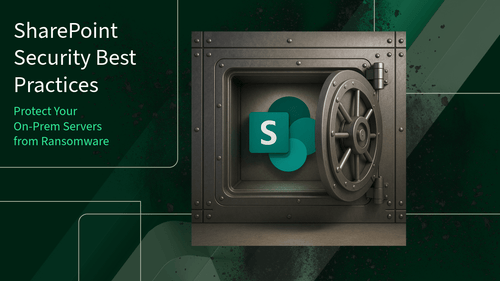Shadow AI and Bring Your Own AI (BYOAI) are rising workplace trends worldwide. With the proliferation of free AI tools and the emergence of AI Agents that perform manual tasks and operate independently, companies need to address the risks of unsanctioned AI. AI tools have entered nearly every industry at work, from ChatGPT, which answers questions and creates content, to Copilot, which boosts employee productivity, and GitHub, which helps generate code. Employees are increasingly depending on these tools, which could lead to data governance issues.
Take this stat, for instance: according to an IBM Newsroom report, one in five organizations has had a breach due to Shadow AI, and only 37% have policies to manage AI.
Let's explore the complex world of BYOAI and Shadow AI by explaining their differences and examining three key risk areas.
Generative AI Explosion
The rise of Generative AI use specifically just this decade has outpaced any other technology, not just in terms of overall use but in its flexibility as a productivity tool, touching almost every industry. The most glaring example is ChatGPT, which, according to CNBC, has specifically amassed 700 million users per week, up 4x from last year. Again, the wide availability of these AI tools and the endless number of use cases contribute to the record increase in AI adoption.
What is BYOAI?
When it comes to the technology space, acronyms abound, but you may be familiar with BYOD (bring your own device), which is simply using your laptop or smartphone for work. Now the next evolution of this is BYOAI (Bring Your Own AI), where employees now use unvetted external AI tools. To put it more simply, an employee may use publicly available AI tools, such as ChatGPT and Notion AI, to improve work productivity. The major issue here is that, without first consulting your IT team, there is no governance or oversight involved. And according to a Microsoft Study, 75% of knowledge workers use AI.

What is Shadow AI?
Where BYOAI is taking these tools to work, Shadow AI is basically the unauthorized or unmanaged use of AI platforms within an organization. It's not the AI itself, but rather the use of these instruments without approval from IT or compliance teams. More specifically, Shadow AI is the outcome of using these BYOAI unauthorized tools that may lead to security vulnerabilities or data leaks. Free tools like ChatGPT have no guardrails when it comes to sensitive private data.
Shadow AI is the next evolution of shadow IT, which is the use of apps or software that your IT team has not vetted. Where Shadow IT is apps and software, Shadow AI is the next generation, consisting of AI tools. When a majority of employees start using AI tools on their own, it can create a governance gap and a huge liability for your company.
A Telusdigital survey states that 57% of employees say they have entered sensitive data into public GenAI Assistants.
It's now a fine line between leveraging AI tools to increase productivity and getting the most out of AI while staying responsible by adhering to predetermined policies. Now organizations need to get ahead of the Shadow AI game by establishing AI policies, providing training, and locking down tools that stay within the company ecosystem.
Powerful AI Tools Create Risk
The rise of BYOAI and Shadow AI can be attributed to easy access to powerful free AI tools like large language models. Since most of these tools don't require any technical setup, employees are using them on their own to get work done faster. For instance, someone might use an AI tool to help segment hospital records, unaware that they may have leaked private patient data, which the deep learning tool may use to train future iterations on.
AI tools have a ton of upside when it comes to enhancing user productivity, which is the upside. But the other side of the coin (the downside) is the risk. IBM’s 2025 Cost of Data Breach Report states that the average global cost is $4.4M! With the acceleration of employees bringing their own AI to the workplace, the instances of Shadow AI have also seen a dramatic increase.
Three Risks Associated with Shadow AI
Shadow AI presents a range of risks to organizations. Three of the most critical dangers associated with Shadow AI are data leaks, regulatory violations, and operational disruptions. Let’s look at the various areas and how these dangers can pose a threat to your company.
Data Leaks
Data leaks are the most common and occur when employees unknowingly expose confidential information through the use of authorized AI tools. For example, a worker seeking assistance from ChatGPT might copy and paste sensitive documents or code into the chatbot. This data has now escaped the confines of the company's internal servers and now sits somewhere in the Cloud for the LLM to use. OpenAI and similar providers usually keep user inputs to improve their models, which means trade secrets or personal data could remain in the AI's training data. Worse, if the AI tool is hacked or if features accidentally make data public, that information can leak out. A real-world example: a marketing team member used ChatGPT to draft content and included confidential client details in the draft press release; those details ended up stored on OpenAI's servers. Such leaks can violate NDAs and reveal strategic plans to outsiders. In short, Shadow AI can turn internal data into external data without anyone immediately noticing.
Regulatory Breaches
Without the proper oversight, using AI tools can lead to serious issues like breaking data protection rules or industry regulations. Sharing sensitive info with AI may even be an unauthorized disclosure. For example, if a doctor uses ChatGPT to summarize patient notes, they could accidentally violate HIPAA by sending protected health data to an outside system. Similarly, financial advisors can break SEC or GDPR rules if client financial data is shared with unapproved AI tools. Shadow AI creates a governance blind spot where rules like GDPR, HIPAA, or industry-specific privacy laws are unknowingly broken. These leaks can lead to investigations, fines, or legal action. Experts warn that unapproved AI use has already caused compliance issues, risking significant penalties. This risk is particularly high in regulated sectors: one reason major banks banned ChatGPT was concern over violating financial data retention and privacy rules.
Operational Disruptions
Shadow AI can open the door to security risks and operational issues. If IT teams don't know a tool is being used, they can't properly assess whether it's secure or reliable. Some of these tools might slip past firewalls, or employees might give them access to sensitive systems, often without realizing the risks. That kind of blind spot can lead to cyberattacks or system failures. For example, an employee might connect a free AI translation API to the company's customer service system, unintentionally bringing in malware or creating a backdoor. The FreeCodeCamp organization describes a case where a developer used an unvetted AI API, and hackers exploited its vulnerabilities, resulting in a serious data breach and system downtime. When AI tools aren't properly governed, they can generate inaccurate or biased results that steer business decisions in the wrong direction, like basing strategy on a flawed analysis. That kind of misstep can derail projects, compromise data, or even create safety risks in critical industries like healthcare and finance. Shadow AI bypasses an organization's usual risk controls, allowing errors or attacks to spread unchecked and significantly impact operations.
Conclusion
As the use of AI tools continues to dramatically increase in the lives of everyday workers, the risk from Shadow AI and Bring Your Own Device continues to climb as well. Employees are flocking to AI tools to boost productivity and simplify repetitive job duties without fully comprehending the negative chain reaction that can occur. The major hurdle for IT teams is not to ban AI tools but to educate employees, enact policies, and secure devices. The goal is to empower teams while mitigating risk and staying compliant. There is no better time than the present to bring AI out of the Shadows by shining a bright light on the dangers of AI adoption in the workplace.













